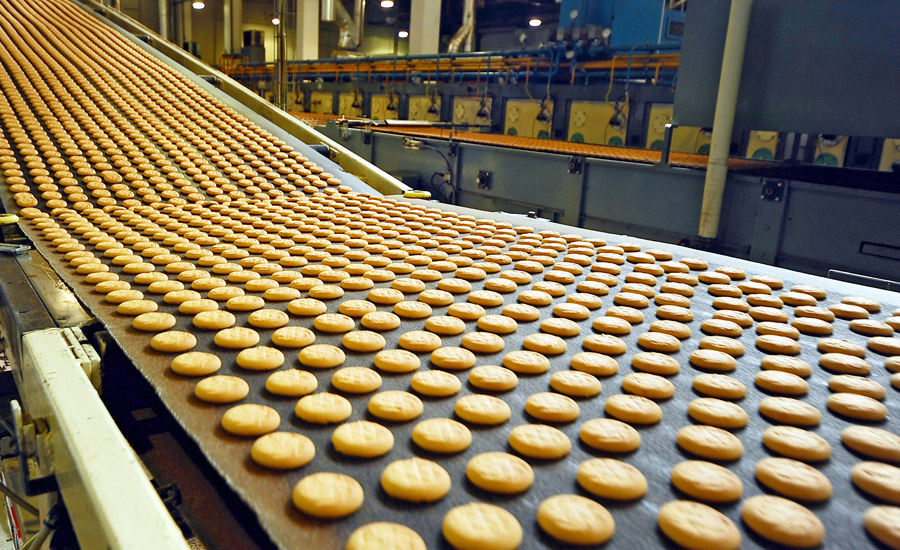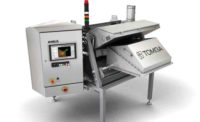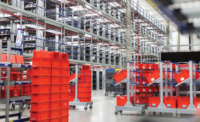The Bottom Line:
- Producers need tighter process control
- All members of a team can play a part
- The more frequent monitoring, the better
Lean manufacturing and Six Sigma can be applied to the snack and bakery industry—just like any other field—to analyze processes, cut down on unnecessary steps, and work to make the desired end result come about more efficiently and effectively.
Yuegang Zhao, chief commercial officer, KPM Analytics, Westborough, MA, notes that the waste reduction that comes with lean manufacturing is key to the snack and bakery industries given that production yield is one of the key performance indicators every plant monitors. “You would like to get high-quality product yield to be in the high 90s [percentage-wise] so they can improve profitability and reduce the amount of rejected materials that either go to waste, animal feed, or other places,” he says.
Bakery and snack companies need to pursue tighter process control on several fronts, starting with a specific knowledge of their yield by closely measuring product before the packaging, ideally using an automated inspection system, Zhao relates. Then, companies need to improve upon their yield through controlling parameters like temperature, moisture level, and oil usage, he says. Next, you have to go back upstream to take note of what materials you are using, which can be a major impact on the downstream product quality.
“a. Otherwise, the customer might say, the recipe was the same today vs. tomorrow … but without knowing what’s changed on the material side, the product might turn out completely different.”
Zhao points to moisture as a particularly important process variable that changes rapidly throughout the process. “For example, a freshly baked cookie, right out of the oven, has a moisture level very different than it does 20 feet down the road before it goes into the freezer,” he comments. “If the process slows down for whatever reason—the packager breaks down, and the cookie must sit on the conveyor belt longer than it’s supposed to—understanding the moisture level throughout the process gives the manufacturer better control.”
Inspecting a product right out of the oven to look at colors, shapes, and volume can help the process engineer to understand whether the oven temperature might be too high, or the baking time too long, Zhao says. “People can feed that information back to the inputs to … have a self-control loop to improve the output of the process,” he advises.
Customers oftentimes experience yields between the mid-80s and low-90s before using automated production line to bring about a leaner process, Zhao says. “But with the automation and the vision and the feedback loop, they can get their yield to at least mid-90s,” he says. “That’s 5% to 10%, which easily translates to millions of dollars of savings every year.”
The Aspire Operational Excellence system at Aspire Bakeries, Northlake, IL, aims at sustainable continuous improvement by focusing on several elements, starting with the alignment of key process indicators (KPIs), which ensures that key indicators and goals align all the way from the bakery management team to the labor operators running the process, says Jody Holder, vice president of operational excellence, safety, and outsourced bakery solutions.
“Everyone should understand how their work contributes to achieving the bakery goals,” he says. “Another important element is monitoring our actual performance. We look to identify any gaps between our performance and the established targets. The more frequent monitoring, the better. At the baking processes, hour-by-hour results are logged and evaluated, with problem-solving efforts initiated, ongoing, if a gap is identified.” The cycle completes when the root cause of process disruptions is eliminated, leading to consistent improvement, she adds.
Overall equipment efficiency (OEE) is a top concern for bakery operations like Aspire, Holder says, noting that process equipment must be maintained effectively to prevent variations that could result in disruptions. “Poor equipment efficiency impacts overall performance in several ways,” he states. “For example, a piece of equipment running with uncontrolled variation could result in waste, reworks, and, ultimately, customer complaints. A significant downtime event could yield the same results, also affecting the ability to meet customer demand.”

To prevent inefficiencies, Aspire has created teams to focus on autonomous and preventive maintenance, Holder says. “These teams perform effective preventive maintenance to keep equipment running efficiently and identify potential abnormalities early—before they can turn into equipment failures,” she says.
The two main sources of process improvement opportunities are daily performance monitoring that alerts the bakery of performance deviates from the standard, which triggers a problem-solving activity to investigate such improvements, as well as the use of exercises called “Value Stream Maps” that attempt to identify non-value-added activities, Holder says. The latter “generate cost but not value in the eyes of our customers,” he comments. “This is a team effort, usually performed in one session, which identifies, prioritizes, and schedules improvement opportunities to be addressed.”
The Aspire Operational Excellence program has had success in reducing a process variation in mixing areas through process centerline projects that aim to ensure that the bakery meets specifications from the start of an order, Holder shares. Another success has been reducing of downtime and ingredient waste by performing equipment restoration events that are planned and executed by the autonomous/preventive maintenance teams, to return equipment to optimal operating conditions, he says.
Rodem, Cincinnati, Ohio, works with clients to try to achieve lean processes that conserve energy, water and steam while improving sanitation through cleaning in place (CIP), and of course reducing costs, says Joseph Steiner, project engineer. “It depends on whether clients or customers ask; we will evaluate the system for them,” he says. “We ask a lot of questions and will get involved with various equipment to help them improve efficiency.”
Improving process control aims to properly calibrate instruments, get proper flow to the flow meters, and overall achieve the basic engineering of getting liquids to various devices where they’re needed, Steiner says. “There could be air in the product; there could be high viscosity or high shear,” he says. “If you’ve got the right metric—the flow rate—consistent, you can usually make the control variable, like the temperature, more accurate.”
Rodem has been working with General Mills on improving the company’s cleaning system using various types of equipment over the past year, Steiner says. General Mills has been looking to increase bakery production but finding that creates other problems such as inefficiencies in cleaning after using high-viscosity doughs. Rodem has designed a way to improve this process using lean principles that it’s talking to General Mills about implementing, he comments.
Another lean project has centered around reducing labor costs and sanitation delays when adding shortening into dough mixes. Steiner says Rodem previously dump 50 pounds of block shortening at a time, which was encased in plastic with a cardboard box wrapped around it. Human operators needed to do this task, and sometimes the plastic bags clung to the shortening and end up in the mix, resulting in downtime to fish them out, he says.
Rodem has been looking at using a twin-screw pump system that gets the shortening into the mix without such problems and without the need for an operator, while at the same time ensuring that the shortening doesn’t melt and become water-thin, Steiner says.
“We’re coming up with a design answer where the operator can put the blocks on a conveyor, uncover them, walk away for 30 to 60 minutes, and the system will automatically dump five [shortening] blocks onto the hopper and put them into the mixer,” he says. “From a lean standpoint, this reduces labor, increases accuracy, and decreases cleaning time. And the quality of the product increases because you eliminate the risk of the plastic getting into the pumps.”
For more information, see the




